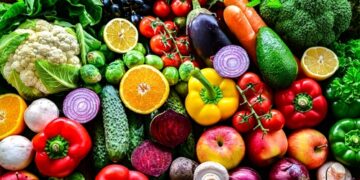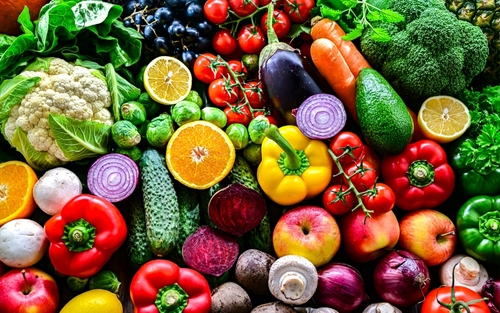More Than Just Calories on a Plate
In a world overflowing with diet buzzwords and food fads, “nutrient-dense” is one phrase that deserves a permanent place at the table. Unlike foods that merely fill space, nutrient-dense ingredients deliver more of what the body truly craves: vitamins, minerals, antioxidants, fiber, and healthy fats—all in a relatively low-calorie package.
But what does it actually mean when we say a food is nutrient-dense? In simple terms, it’s the measure of nutrition per bite. Some foods are just more efficient—they give you more health-supporting compounds without asking for much in return. These are the foods that truly fuel us, not just temporarily satisfy us.
Ad Banner #1
Placeholder for the first ad.
What Makes a Food Nutrient-Dense?
Imagine two meals, both around the same number of calories. One is a fast-food sandwich with fries; the other is a bowl with quinoa, sautéed kale, roasted sweet potato, and a sprinkle of seeds. One gives you salt, sugar, and empty fats. The other gives you fiber, vitamin A, iron, magnesium, complex carbohydrates, and healthy fats. That’s the difference.
Nutrient density is about value. You’re not just eating to feel full—you’re eating to nourish your cells, support your organs, and energize your day. It’s food with purpose. And the best part? It often tastes better, too.
The All-Stars of Nutrient Density
There’s a reason why certain ingredients keep showing up in conversations about health: they’re small but mighty. These foods consistently rise to the top when we look at nutrition per serving.
Leafy Greens
Spinach, kale, arugula, collards—these greens are among the most nutrient-rich foods on the planet. They’re packed with vitamins A, C, and K, folate, iron, and calcium, along with powerful antioxidants that support cell repair and reduce inflammation.
Berries
Colorful, tangy, and naturally sweet, berries bring more than just flavor. Blueberries, raspberries, blackberries, and strawberries are loaded with vitamin C, fiber, and polyphenols that support brain health and cardiovascular function. Their rich color is a clue to their antioxidant potency.
Nuts and Seeds
Though small in size, almonds, walnuts, chia seeds, flaxseeds, and pumpkin seeds are nutritional powerhouses. They’re rich in omega-3 fats, protein, magnesium, and fiber. Just a small handful can satisfy hunger and deliver sustained energy.
Cruciferous Vegetables
Broccoli, Brussels sprouts, cabbage, and cauliflower offer fiber, vitamin C, and plant compounds that support liver detoxification and hormone balance. These vegetables work hard behind the scenes.
Legumes
Beans, lentils, and peas are incredibly budget-friendly and deeply nourishing. They’re rich in protein, fiber, folate, iron, and slow-digesting carbohydrates. A staple in many long-lived cultures, they’re as practical as they are powerful.
Eggs
Often underrated, eggs are compact packages of protein, choline, B vitamins, and healthy fats. One egg delivers a remarkable range of nutrients, especially when eaten whole.
Sweet Potatoes
Don’t let their sweetness fool you—these root vegetables are rich in beta-carotene (a precursor to vitamin A), potassium, and fiber. Roasted, mashed, or baked, they’re versatile and satisfying.
Ad Banner #2
Placeholder for the second ad.
Eating for Impact, Not Just Intake
The beauty of nutrient-dense eating is that it doesn’t mean eating more—it means eating smarter. Instead of chasing numbers or cutting entire food groups, it’s about filling your plate with ingredients that give more than they take.
Build meals around these kinds of foods and notice how your body responds. A smoothie with spinach and berries, a bowl of lentils with roasted vegetables, a salad topped with seeds and a boiled egg—these meals do more than just prevent hunger. They build strength, balance mood, support immunity, and keep you mentally sharp.
Over time, this way of eating becomes intuitive. You start reaching for the foods that feel good—not just in the moment, but in the hours and days that follow.
Let the Ingredients Do the Heavy Lifting
There’s no need for complicated systems or restrictive rules. Instead, let your meals revolve around foods that carry weight in terms of nutrition. The more color, texture, and variety on your plate, the better.
When you begin thinking in terms of nourishment rather than restriction, nutrient-dense eating becomes less about what you remove and more about what you add. That extra handful of greens. The spoonful of flaxseed in your oatmeal. The rainbow of veggies you toss into a stir-fry. Small choices that add up to something bigger.
And it’s not about perfection. It’s about making the best choice available to you in the moment. The more of these ingredients you work into your day, the more your meals become tools for wellness—not just routines for satiety.



























